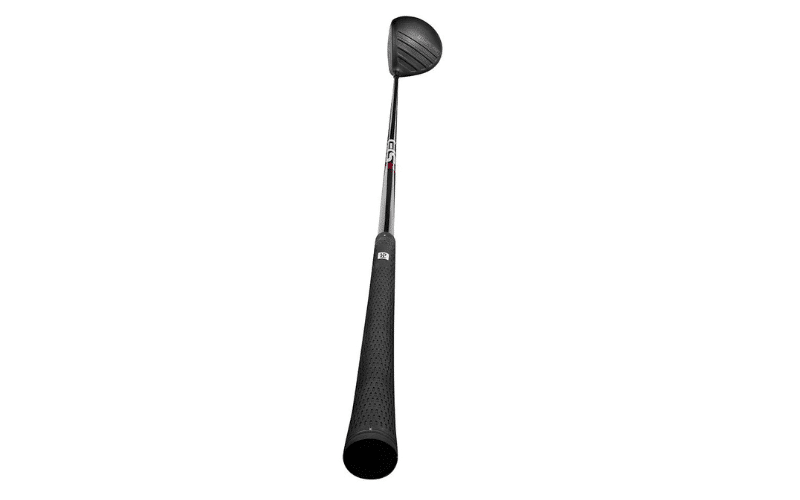Key Takeaways
- Customizing your SF1 golf driver can significantly improve your game by tailoring the club to your unique swing.
- Adjusting the clubhead, shaft, and grip are crucial steps in the customization process.
- Advanced techniques like personalizing loft and lie angles can further refine your performance.
- Regular maintenance, including cleaning and adjustments, ensures your customized driver remains in top condition.
- Understanding the specific benefits and adjustments can help you decide whether to customize your driver yourself or seek professional help.
The Ultimate Guide to Customizing Your SF1 Golf Driver
Golf is a game of precision, and every detail matters, especially your equipment. Customizing your SF1 golf driver can make a world of difference in your performance.
Whether you're struggling with a slice or seeking more distance, tweaking your driver to fit your unique needs can help you play your best golf.
Why Customize Your SF1 Golf Driver?
Customizing your SF1 golf driver isn't just about making minor tweaks; it's about transforming your game. When you adjust your driver to suit your swing, you gain control, accuracy, and confidence. Most importantly, you can correct common issues like slices or hooks.
Think about it: If your driver doesn't match your swing speed, grip, or stance, you're likely fighting against your equipment. But with a few adjustments, you can turn your driver into a tool that works with you, not against you.
This can lead to more fairways hit, longer drives, and ultimately, lower scores.
Components Of The SF1 Driver
Before diving into the customization process, it's essential to understand the main components of the SF1 driver. Each part plays a crucial role in your performance, and knowing what to adjust can make all the difference.
The Clubhead
The clubhead is the heart of your driver. It's where the magic happens. The SF1's clubhead is designed to provide a square face at impact, helping to eliminate slices and improve accuracy.
However, you can still make adjustments to suit your specific needs. Learn more about aerodynamic advancements in driver technology to further enhance your game.
For instance, the loft angle of the clubhead affects the trajectory of your shots. A higher loft can help get the ball airborne more easily, while a lower loft can provide a more penetrating ball flight.
Adjusting the lie angle can also help you hit straighter shots by aligning the clubhead correctly at impact.
The Shaft
The shaft is the engine of your driver. It directly influences the speed and accuracy of your swing. The SF1 driver comes with a counterbalanced shaft, which means the weight is distributed closer to the grip.
This design stabilizes your hands, creates more lag, and speeds up the clubhead at impact.
However, not all golfers have the same swing speed or style. Therefore, customizing the shaft length, flex, and material can make a significant impact.
For example, a stiffer shaft might be better for those with faster swing speeds, while a more flexible shaft could benefit slower swingers.
The Grip
The grip is your direct connection to the club. A comfortable and secure grip can improve your control and confidence. The SF1 driver allows for various grip options, so you can choose one that fits your hand size and preference.
Additionally, the texture and thickness of the grip can affect your swing. A thicker grip can help reduce hand action and promote a smoother swing, while a thinner grip might allow for more wrist action. It's all about finding what feels best for you.
Step-by-Step Guide to Customizing Your SF1 Driver
Customizing your SF1 driver can seem daunting, but it’s a straightforward process if you break it down into manageable steps. By focusing on key areas such as the clubhead, shaft, and grip, you can tailor the driver to match your swing perfectly. Let’s walk through each step in detail.
Adjusting the Clubhead
The clubhead is where you’ll make the most significant changes. Start by adjusting the loft angle. If you tend to hit low shots, increasing the loft can help you achieve a higher ball flight.
Conversely, if your shots are too high, decreasing the loft can produce a more penetrating trajectory.
Next, focus on the lie angle. A flatter lie angle can help if you’re hitting shots to the right (for right-handed golfers), while a more upright lie can correct shots going left. Most SF1 drivers come with adjustable hosels that make these changes easy.
To adjust the clubhead:
- Loosen the screw on the hosel using the provided wrench.
- Rotate the clubhead to the desired loft and lie settings.
- Tighten the screw securely to lock in your adjustments.
Changing the Shaft
The shaft’s length, flex, and material all play critical roles in your driver’s performance. For instance, a longer shaft can increase your swing speed but may reduce control.
On the other hand, a shorter shaft can offer more control but might sacrifice some distance. For more insights, check out this in-depth analysis of the Cleveland Launcher XL Driver.
When it comes to flex, consider your swing speed. Golfers with faster swings typically benefit from stiffer shafts, while those with slower swings might find more flexible shafts advantageous.
Material-wise, graphite shafts are lighter and can help increase swing speed, whereas steel shafts offer more control and feedback. For a detailed review, check out this SF1 driver review.
To change the shaft, you might also want to consider reading our detailed Sub70 849D driver review for more insights.
- Remove the clubhead by loosening the screw on the hosel.
- Detach the current shaft and replace it with the new one.
- Reattach the clubhead and ensure the screw is tightened securely.
Selecting the Right Grip
The grip is often overlooked but is essential for maintaining control and comfort. The right grip size can prevent your hands from slipping and promote a more consistent swing.
Grips come in various sizes, from undersize to oversize, so choose one that fits your hand comfortably.
Additionally, consider the grip texture. A more textured grip can provide better traction, especially in wet conditions, while a smoother grip might be more comfortable for those with sensitive hands.
To change the grip:
- Remove the old grip by cutting it off with a utility knife.
- Apply grip tape to the shaft.
- Slide the new grip onto the shaft, ensuring it’s aligned correctly.
- Let the grip dry for a few hours before using the driver.
Watch The Video Below To Learn More About The SF1 Driver
Advanced Customization Techniques
Once you’ve mastered the basics, you can dive into more advanced customization techniques. These adjustments can fine-tune your driver to match your specific playing style and preferences.
Personalizing Loft and Lie Angles
Besides the standard adjustments, you can further personalize the loft and lie angles to optimize your ball flight and accuracy. For example, if you struggle with a slice, adjusting the loft and lie angles can help you square the clubface at impact.
- Use a launch monitor to analyze your ball flight and identify areas for improvement.
- Make incremental adjustments to the loft and lie angles based on the data.
- Test the changes on the range to see how they affect your shots.
Remember, small adjustments can lead to significant improvements, so take your time to find the perfect settings.
Fine-Tuning Swing Weight
Swing weight refers to how the weight of the club feels when you swing it. Adjusting the swing weight can help you achieve a smoother and more controlled swing. You can change the swing weight by adding or removing weight from the clubhead.
To fine-tune swing weight:
- Use lead tape to add weight to the clubhead if you need a heavier feel.
- Remove weight from the clubhead if you prefer a lighter feel.
- Experiment with different weights to find the right balance for your swing.
By fine-tuning the swing weight, you can improve your swing tempo and consistency, leading to better overall performance.
Maintaining Your Customized SF1 Driver
Once you’ve customized your SF1 driver, it’s crucial to maintain it properly to ensure it stays in top condition. Regular maintenance can prolong the life of your driver and keep it performing at its best.
Cleaning and storage tips: For detailed advice on maintaining your golf equipment, check out this Performance Golf SF1 Driver review.
- Clean the clubhead and shaft after each round to remove dirt and debris.
- Store your driver in a cool, dry place to prevent damage from extreme temperatures.
- Use a headcover to protect the clubhead during transport.
Regular adjustments and checks:
- Periodically check the screws on the hosel to ensure they’re tight.
- Inspect the grip for wear and replace it if necessary.
- Re-evaluate your settings periodically to ensure they still match your swing.
By following these maintenance tips, you can keep your customized SF1 driver in excellent condition and enjoy its benefits for years to come.
Customizing your SF1 driver can seem daunting, but it’s a straightforward process if you break it down into manageable steps. By focusing on key areas such as the clubhead, shaft, and grip, you can tailor the driver to match your swing perfectly. Let’s walk through each step in detail.
Frequently Asked Questions (FAQs)
How does customizing my SF1 driver help my swing?
Customizing your SF1 driver helps your swing by tailoring the club to your specific needs. Adjusting the loft, lie angle, shaft, and grip can correct common issues like slices or hooks, improve control, and increase distance.
These adjustments ensure that the club works with your swing, not against it.
Can I adjust my SF1 driver myself or should I seek professional help?
You can adjust your SF1 driver yourself using the provided tools and instructions. However, if you’re unsure or want to ensure optimal settings, seeking professional help from a golf fitter can be beneficial.
They have the expertise and equipment to fine-tune your driver to match your swing perfectly.
How often should I make adjustments to my SF1 driver?
Adjustments to your SF1 driver should be made as needed. If you notice changes in your swing or performance, re-evaluate your settings. Regularly checking and maintaining your driver ensures it remains in top condition and continues to meet your needs as your game evolves.
Customizing your SF1 golf driver can significantly improve your game. By adjusting the loft, lie, and weight distribution, you can tailor the club to match your swing perfectly.
This not only enhances your accuracy but also increases your distance. For a detailed review of the SF1 driver, check out this Performance Golf SF1 Driver Review.


